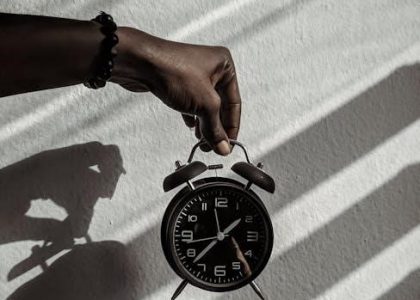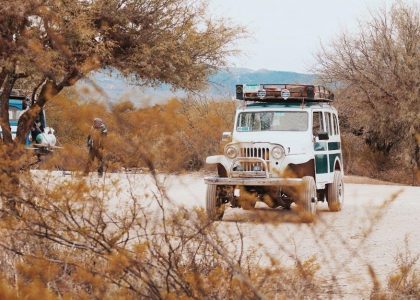Early Life of Moses
Moses was born into a Hebrew family during slavery in Egypt. His mother hid him in a basket, and he was found by Pharaoh’s daughter, who adopted him.
Moses grew up in the Egyptian palace, receiving a royal upbringing despite his Hebrew origins, which shaped his early life and future leadership.
1.1 The Birth and Adoption of Moses
Moses was born to a Hebrew family during a time of slavery in Egypt. To save him from Pharaoh’s decree to kill all Hebrew male infants, his mother placed him in a basket and set him afloat on the Nile River. Pharaoh’s daughter discovered the basket and adopted Moses, naming him after the Egyptian word for “drawn from the water.” His Hebrew mother, Jochebed, was chosen by Pharaoh’s daughter to nurse him, allowing Moses to remain connected to his heritage. This miraculous adoption set the stage for Moses’ eventual role as a leader of his people.
1.2 Moses’ Upbringing in the Egyptian Palace
Moses was raised in the Egyptian palace by Pharaoh’s daughter, where he received a royal education and upbringing. Despite his Hebrew origins, he was treated as an Egyptian prince, gaining knowledge of Egyptian customs, language, and leadership. His early life in the palace provided him with the skills and confidence necessary for his future role as a leader. However, his connection to his Hebrew heritage remained strong, shaping his identity and eventual mission.
Moses in Egypt
Moses, raised in Egypt, became a leader among Hebrews. He killed an Egyptian for abusing a Hebrew, fled to Midian, and later returned to confront Pharaoh.
2.1 The Killing of the Egyptian and Moses’ Flight
Moses, raised in the Egyptian palace, witnessed the oppression of his Hebrew people. One day, he saw an Egyptian beating a Hebrew slave and, in anger, killed the Egyptian. Fearing Pharaoh’s wrath, Moses fled to Midian, where he found refuge with Jethro, a priest. There, he married Jethro’s daughter, Zipporah, and began a peaceful life as a shepherd. This event marked a turning point, as Moses’ actions in Egypt led to his exile, setting the stage for his future role as a leader of the Israelites.
2.2 Moses’ Life in Midian and Marriage
After fleeing Egypt, Moses found refuge in Midian, where he met Jethro, a priest, and married his daughter, Zipporah. Moses embraced a simple life as a shepherd, tending Jethro’s flocks. This period allowed Moses to reconnect with his Hebrew roots and gain wisdom from Jethro, who became a father figure. Moses’ marriage to Zipporah brought him into a new family and culture, enriching his understanding of God and leadership. His humble life in Midian was a transformative experience, preparing him for his divine calling to lead the Israelites out of slavery.

The Call of Moses
Moses encountered a burning bush where God spoke to him, commissioning him to lead the Israelites out of Egypt. This divine call transformed Moses from a humble shepherd into a leader.
3.1 The Burning Bush and God’s Commission
The burning bush marked a pivotal moment in Moses’ life. While tending his father-in-law’s flocks in Midian, Moses encountered a bush that burned without being consumed by fire. From the bush, God spoke to Moses, revealing Himself as the God of Abraham, Isaac, and Jacob. He commissioned Moses to return to Egypt and demand that Pharaoh release the Israelites from slavery. Despite Moses’ initial reluctance, God assured him of His presence and power, providing miraculous signs, such as Moses’ staff turning into a serpent, to confirm His calling. This divine encounter transformed Moses from a humble shepherd into a leader destined to deliver his people.
3.2 Moses’ Reluctance and God’s Assurance
Moses expressed hesitation when called by God, citing his inadequacy and lack of eloquence. He pleaded with God to choose someone else, fearing he would not be effective. God, however, reaffirmed His choice and provided assurance; He told Moses that Aaron, his brother, would assist him in speaking to Pharaoh and the people. Additionally, God granted Moses the ability to perform miracles, such as turning his staff into a serpent and causing his hand to become leprous, as signs of divine authority. These assurances strengthened Moses’ confidence, enabling him to accept the mission and trust in God’s presence and power throughout the challenges ahead.

Return to Egypt
Moses returned to Egypt after years in Midian, facing opposition from both Egyptians and Hebrews. His mission to free the Israelites was met with resistance and skepticism initially.
4;1 Moses and Aaron Before Pharaoh
Moses and Aaron confront Pharaoh, demanding the Israelites’ freedom. Despite performing miracles, Pharaoh refuses, leading to escalating tensions and the introduction of the ten plagues as divine judgment.
4.2 The Hardening of Pharaoh’s Heart
Pharaoh’s heart grew increasingly stubborn as Moses and Aaron delivered God’s demands. Despite the miracles and warnings, Pharaoh refused to release the Israelites, leading to intensified suffering for the Hebrews.
The Bible suggests that God hardened Pharaoh’s heart to demonstrate His power and fulfill His plan. This divine intervention ensured that Pharaoh’s defiance would ultimately lead to the ten plagues, a dramatic showcase of God’s authority.

The Ten Plagues
The ten plagues, including water turned to blood and the death of the firstborn, were divine punishments that compelled Pharaoh to release the Israelites from slavery.
5.1 The First Nine Plagues
The first nine plagues were a series of divine judgments sent by God to convince Pharaoh to release the Israelites from slavery. The plagues began with the transformation of the Nile River into blood, causing widespread death of fish and making the water undrinkable. Next came an infestation of frogs, followed by lice or gnats, which infested both people and animals. The fourth plague introduced swarms of flies that plagued the Egyptians but spared the Israelites. The fifth plague brought disease upon Egypt’s livestock, killing many animals. The sixth plague caused painful boils on humans and animals. The seventh plague unleashed hail that destroyed crops and property. The eighth plague brought locusts that devoured what remained of the crops. Finally, the ninth plague enveloped Egypt in a thick darkness that lasted for three days. Each plague demonstrated God’s power and Pharaoh’s stubborn resistance.
5.2 The Tenth Plague and the Passover
The tenth and final plague was the most devastating, as God decreed that every firstborn son in Egypt would die. However, He provided a way for the Israelites to be spared. Moses instructed the Israelites to mark their doorposts with the blood of a lamb, so that the angel of death would “pass over” their homes. This event became known as the Passover. The night of the tenth plague, a great cry arose in Egypt as the firstborn sons perished, while the Israelites were protected by their obedience to God’s command. This plague compelled Pharaoh to finally release the Israelites from their bondage, leading to their dramatic exodus from Egypt. The Passover has since become a significant commemoration in Jewish tradition, symbolizing deliverance and redemption.

The Exodus
Moses led the Israelites out of Egypt, marking the end of their slavery. This dramatic departure was followed by their journey toward the Promised Land.
6.1 The Israelites’ Departure from Egypt
The Israelites left Egypt in a hurried manner, not having time to let their bread rise, which is why they ate unleavened bread during the departure.
They took with them their livestock and possessions, marking the end of their long period of slavery under Egyptian rule.
The Exodus was a pivotal moment, as it signified freedom and the beginning of their journey to the Promised Land under Moses’ leadership.
This event is deeply symbolic in the biblical narrative, representing deliverance and the fulfillment of God’s promise to His people.
6.2 The Parting of the Red Sea
Moses, by God’s instruction, stretched out his staff over the Red Sea, and a strong east wind parted the waters, creating a dry path for the Israelites to cross safely.
Once the Israelites were on the other side, the sea closed again, drowning Pharaoh’s pursuing army and marking a miraculous deliverance for God’s people.
This event solidified Moses’ role as a divine leader and demonstrated God’s power over nature, providing a pivotal moment in the Israelites’ journey to freedom.
The parting of the Red Sea remains one of the most iconic miracles in biblical history, symbolizing salvation and divine intervention.

Journey Through the Wilderness
The Israelites faced numerous challenges and divine provisions during their wilderness journey, testing their faith and reliance on God’s guidance and miraculous interventions.
7.1 The Provision of Manna and Water
During their wilderness journey, God miraculously provided manna, a divine bread, to sustain the Israelites. This daily provision was a test of their faith and obedience, teaching them to rely on God’s timing and promises.
Additionally, God supplied water from a rock when Moses struck it, demonstrating His faithfulness in times of desperation. These supernatural provisions underscored God’s care and commitment to His people, reinforcing their trust in His leadership and provision during their challenging journey.
7.2 The Rebellion of the Israelites
During their wilderness journey, the Israelites frequently rebelled against Moses and God, expressing discontent with their circumstances. One notable instance was their idolatrous worship of the golden calf while Moses was on Mount Sinai, a direct defiance of God’s commandments.
Additionally, the Israelites complained about the lack of food, leading to God sending quail, but their ingratitude resulted in a plague. Their rebellion extended to doubting God’s promise of the Promised Land, as seen when they refused to trust the spies’ report, leading to 40 years of wandering.
Moses interceded for the people, demonstrating his leadership and God’s merciful nature, despite their repeated disobedience.

The Giving of the Law
Moses received the Ten Commandments from God on Mount Sinai, establishing a covenant with the Israelites. These laws served as moral and legal guidelines.
8.1 The Journey to Mount Sinai
After the Exodus, Moses led the Israelites to Mount Sinai, a pivotal moment in their journey. The mountain was shrouded in divine presence, with thunder, lightning, and smoke signaling God’s presence.
The people were instructed to consecrate themselves, preparing for the revelation. Moses ascended the mountain, where he received the Ten Commandments and other laws, forming the covenant.
This journey marked a significant transition, transforming the Israelites from a group of liberated slaves into a covenant community bound by divine law and purpose.
8.2 The Ten Commandments and the Covenant
The Ten Commandments, inscribed on stone tablets, were revealed to Moses by God on Mount Sinai. These laws formed the core of the covenant between God and the Israelites, establishing moral and legal guidelines.
The commandments emphasized monotheistic worship, respect for life, and ethical conduct, serving as the foundation for Israel’s identity and relationship with God. They were a binding agreement, sealing the people’s commitment to obey His will.
Through this covenant, the Israelites became a holy nation, set apart to reflect God’s character. The Ten Commandments remain a cornerstone of biblical teaching, shaping moral frameworks and spiritual practices for generations.

The Tabernacle
The Tabernacle, built under God’s guidance, served as a portable place of worship. It symbolized God’s presence among the Israelites during their wilderness journey.
9.1 The Construction of the Tabernacle
The Tabernacle was constructed according to detailed instructions given by God to Moses on Mount Sinai. It was a portable structure designed for worship and sacrifice, symbolizing God’s presence among the Israelites. The framework was made of acacia wood, covered with gold, and the exterior with bronze. The roof was made of layered materials, including fine linen and animal skins. The Tabernacle included the Ark of the Covenant, the altar of incense, and the menorah, all crafted by skilled artisans. Bezalel and Oholiab, filled with the Spirit of God, led the construction, ensuring every detail aligned with divine specifications. This sanctuary became the heart of Israelite worship during their wilderness journey.
9.2 The Priesthood and Worship Practices
The priesthood was established with Aaron, Moses’ brother, as the first high priest, and his sons as priests. They were responsible for performing sacrifices, rituals, and maintaining the Tabernacle. The priests wore sacred garments, including a breastplate and ephod, symbolizing their divine role. Daily rituals included burning incense and lighting the menorah, while sacrifices were offered for sin, thanksgiving, and fellowship. The priesthood ensured the Israelites’ spiritual purity and mediated between God and the people. These practices reinforced God’s presence and covenant with Israel, emphasizing obedience, atonement, and worship as central to their faith.

Moses’ Leadership and Challenges
Moses demonstrated strong leadership by guiding the Israelites out of Egypt and through the wilderness. He faced challenges like rebellion, pressure from the people, and direct communication with God.
10.1 Moses’ Role as a Leader
Moses played a pivotal role as a leader, guiding the Israelites from Egyptian slavery to the Promised Land. His leadership was marked by divine appointments, as he received direct commands from God to confront Pharaoh and lead the Exodus. Moses demonstrated both spiritual and political leadership, mediating between God and the people. He established a system of governance, delegating authority to trusted individuals to manage the community. His ability to communicate with God and interpret divine will made him a central figure in maintaining the Israelites’ faith and order. Despite facing rebellion and criticism, Moses remained steadfast, embodying humility and obedience to God’s plan.
10.2 The Challenges Moses Faced
Moses encountered significant challenges during his leadership. The Israelites often rebelled against him, murmuring about their conditions and doubting his decisions. Despite his efforts, Moses faced the burden of leading a stubborn people, who frequently tested his patience and faith. Additionally, Moses had to navigate the complexities of communicating God’s will, often facing resistance and disbelief. The pressures of leadership, combined with the demands of maintaining order, weighed heavily on him. Furthermore, Moses dealt with Pharaoh’s defiance and the hardships of the wilderness journey, which further strained his role as a leader. His challenges culminated in incidents like the golden calf and the bronze serpent, highlighting the difficulties of guiding a rebellious nation toward obedience and faith.

Moses’ Death and Legacy
Moses died at 120 years old, buried by God in an unknown location. His legacy endures as a prophet, leader, and lawgiver, shaping Israel’s history and faith.
11.1 The Death of Moses
Moses died at the age of 120, still physically and mentally vigorous, on Mount Nebo, where God showed him the Promised Land. His death was a divine act, as God buried him in an unknown location in Moab to prevent idolatry. This event marked the end of an era for the Israelites, who mourned him for 30 days. Moses’ death symbolized the transition of leadership and the fulfillment of his mission. His burial site remains a mystery, emphasizing his humble exit and preventing future veneration. Moses’ life and death underscored his obedience to God and his unparalleled role as a prophet and leader.
11.2 The Legacy of Moses
Moses’ legacy as a prophet, leader, and lawgiver is profound. He delivered the Israelites from slavery, receiving the Ten Commandments and establishing covenant worship. His leadership shaped Israel’s identity and faith, influencing Judaism, Christianity, and Islam. Moses’ humility and faith despite challenges set a divine standard for leadership. His impact remains unparalleled, inspiring future generations to follow divine guidance and uphold justice, making him a timeless spiritual figure.





